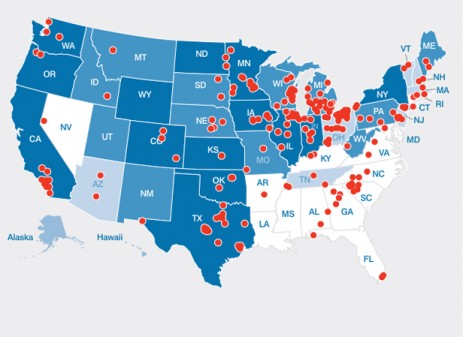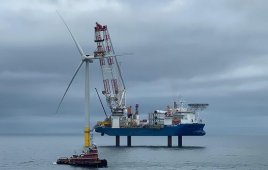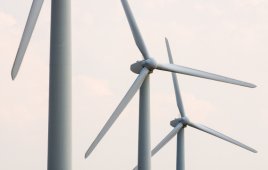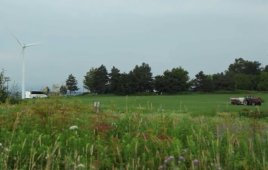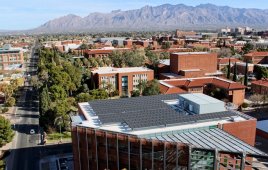The American Wind Energy Association (AWEA) held a 2010 election analysis and wind industry webcast this afternoon. AWEA CEO Denise Bode and Director of Industry Data and Analysis Elizabeth Salerno shared a presentation discussing how the election results will impact the U.S. wind industry, misinformation during the campaign, the third quarter results, and legislative priorities going forward.
The two AWEA representatives say that although election ads delivered negative, false, and misleading information about the wind industry, public opinion is in support of it. A recent Harris poll found 87% of Americans want to see more wind energy installations. They want the jobs and manufacturing base, as well as all the benefits of making our own clean energy here in the U.S. For example, California voters reached a victory over fossil fuel lobbyists when they defeated proposition 23, which would have sent the industry backwards.
The good news is that 50% of U.S. turbine components are manufactured domestically and 37 states have wind turbines installed. But there’s still more to do. Last year wind accounted for 39% of new installed electric capacity, versus 13% from coal. However, in the first nine months of 2010 that ratio flipped. The wind industry is down 72% from what it was at this time last year. Fossil fuels currently account for 70% of the country’s energy.
One important issue Bode and Salerno stressed was the need for extending the short-term tax credits of 2009, which helped boost the wind industry to a high of 10,000 MW in new capacity last year. Unfortunately, the industry has slowed to less than half that rate, while Europe is installing twice and China three times that. Any wind projects that begins before the end of 2010 qualify for the tax-credits, but the incentive expires at the end of the year. Bode says fossil fuels get five times more government support than renewable energy. The tax-credits need to be extended in order to level the playing field between renewable energy and fossil fuels, diversify the country’s energy portfolio, and enable competition. A Renewable Electricity Standard is also needed to attract investors and spur the industry. Thirty states have already enacted their own RES policies. Establishing an RES and preserving the 1603 tax credit program are on the agenda in the remaining lame duck session of this Congress. By achieving the passage of these developments, Congress will be signaling to the world that the U.S. is open for business therefore attracting investors and ensuring that we get more of our energy here and not import it from overseas.
Another important element is transmission. Bode says a good interconnection is needed to move forward. The current transmission system is 50-years-old, so even regardless of wind it’s in desperate need of repair and expansion. Working on the transmission system on a regional level is a high priority of AWEA, and Bode says the organization is looking forward to working with Senate Majority Leader Harry Reid in Nevada who has been actively involved in these issues in the past.
Bode says the organization is also looking forward to working with John Boehner, the next speaker of the house, who wants to reduce our dependence on foreign sources of energy and create American jobs and grow our economy. Also, his agenda is compatible with market-based policies that drive renewable energy, such as tax credits and renewable portfolio standards. These policies have been supported on a bipartisan basis at the state and federal level for over a decade. Members of Congress on both sides have supported the wind industry sector because they know it will create jobs and is an investment in our economy and homegrown clean energy. But stable policies are essential to helping it do so.
AWEA www.awea.org
Filed Under: Policy

